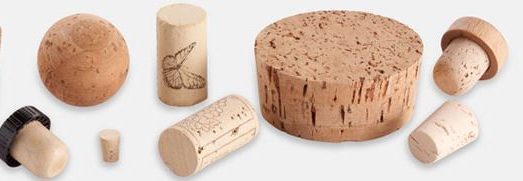The cork oak is planted in the south of Portugal, North Africa, and Spain. Portugal produces more than 50% of the world’s cork. It is usually the soil and climate types of this zone that keep the cork oak growing. Even if cork trees can be planted in some Asian regions, only cork harvested from the Mediterranean country is recognized as commercial quality.
Cork is a subset of cork tissue, harvested for industrial and commercial use mainly from the Cork Oak tree. Cork consists predominantly of suberin. Cork’s flexibility mixed with its near-impermeability becomes most suitable material for jar and bottle stoppers, particularly for wine bottles. Cork stoppers dominate all cork production. These stoppers are widely-used to maintain the freshness and quality of the beverage. Generally, such corks are elastic, flexible but compacted in nature. With a natural substance known as suberin obtained from the barks of the trees, such stoppers have the ability to block any form of air and liquid from getting into its body and these materials are also fire-resistant.
Cork’s low density becomes a perfect material for buoys and floats also can be used as a handle for fishing rod. Cork also can be used for musical instruments, especially woodwind music instrument, where it can be used to fasten jointly different parts of the instrument.
Cork is also manufactured in the form of sheets and they are widely-used to make bulletin boards and floor. Corkboards can be found in many institutions today. They are framed with decorative aluminum or wood and placed or hung on stands in the areas in which people can view the messages pinned on the bulletin boards. Corkboards can be found in colleges, schools, hospitals, theatres, and offices. The lightweight nature of cork can make it easy to carry and install from one area to another.
The cork industry is considered to be environmentally friendly .The sustainability of the manufacturing and the hassle free recycling of commercial cork products are two of its most wonderful aspects. Cork marketplace demand has considerably higher due to a greater amount of wine getting sealed with cork instead of being sold in bulk. As a tree’s bark is only able to be harvested once a year or so, supply is greatly inelastic. High grade corks are rather expensive, many cheaper brands are switching to lower quality cork, and cork has long been used in rocket engineering because of its fire resistance. Cork can even be used as bricks for the exterior wall of a house.
Due to the durability of the corks, such materials can be used in boats, buildings as well as for aesthetic solutions. Due to the innovation of the technology, the art of producing the cork material have progressed now. Cork is the perfect material for residential, industrial, and commercial uses as Sustainability has become a popular topic for a good few years now and product designers are trying to find the best materials which have a minimum impact on the environment.



